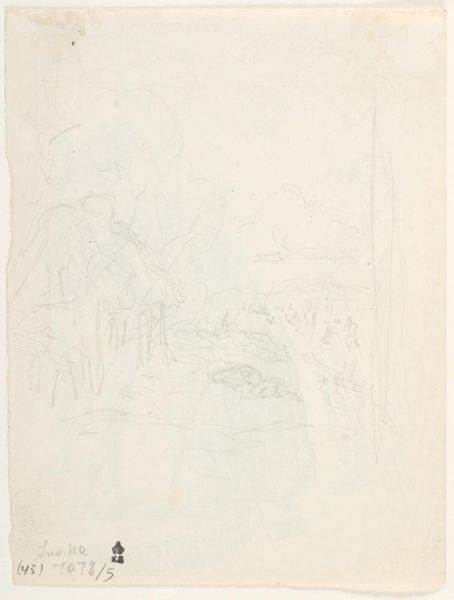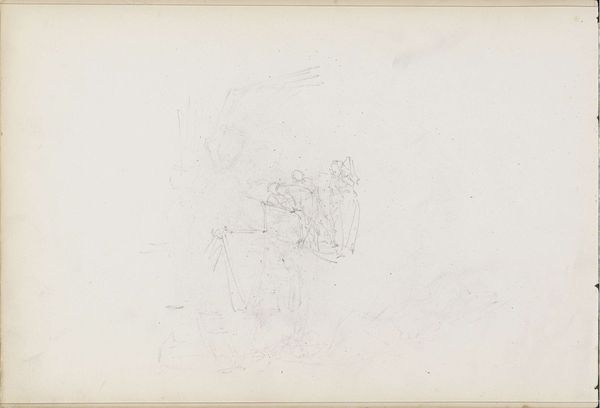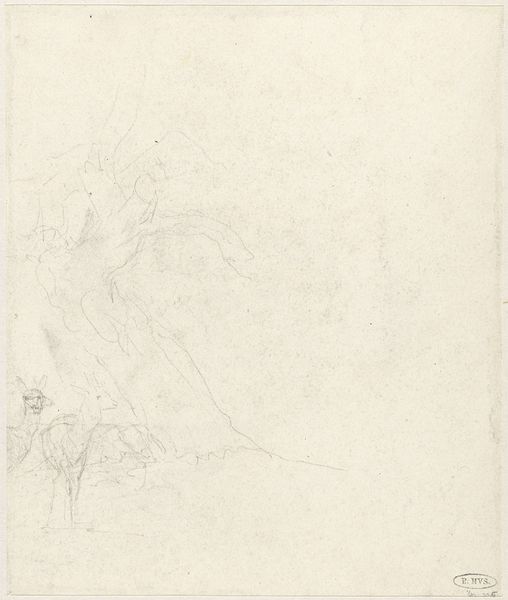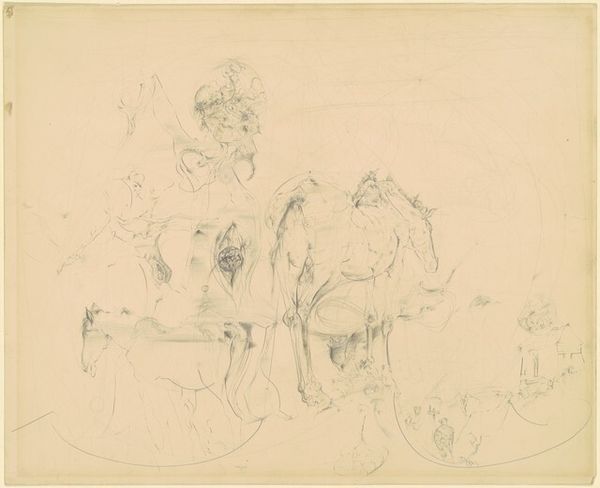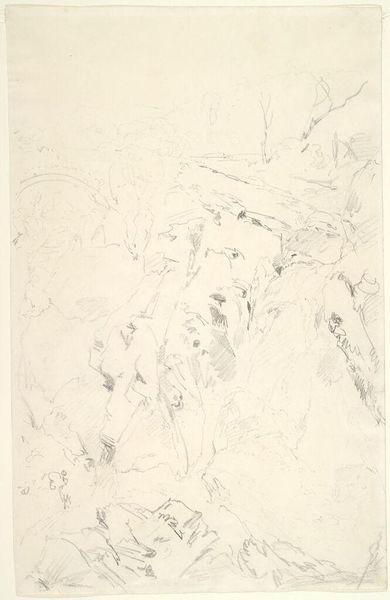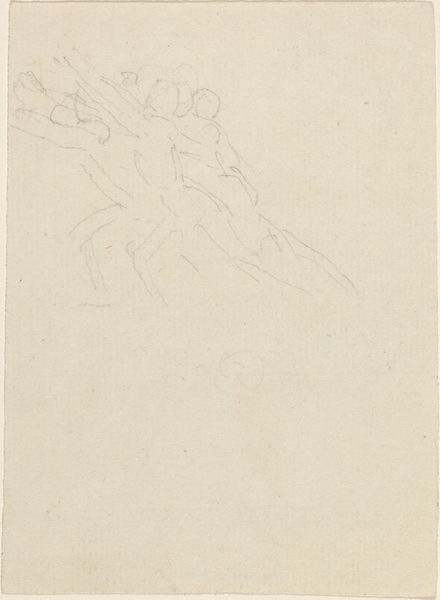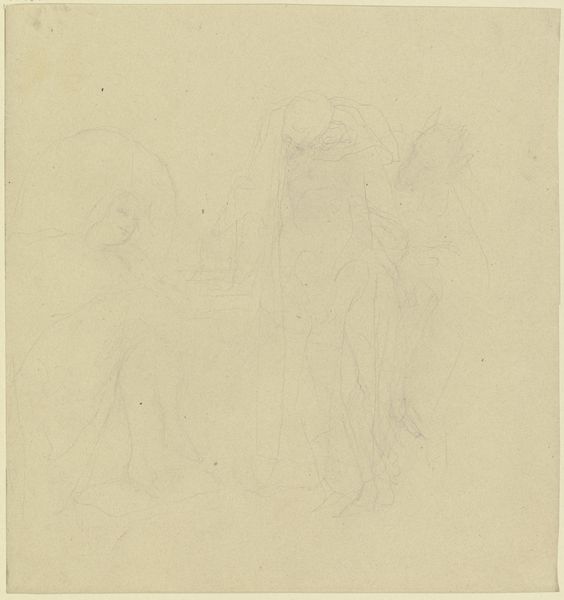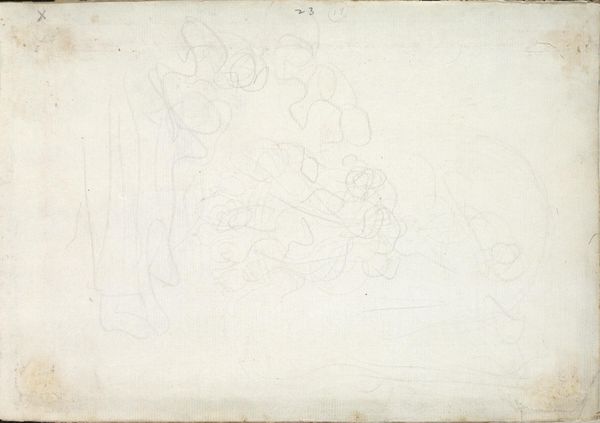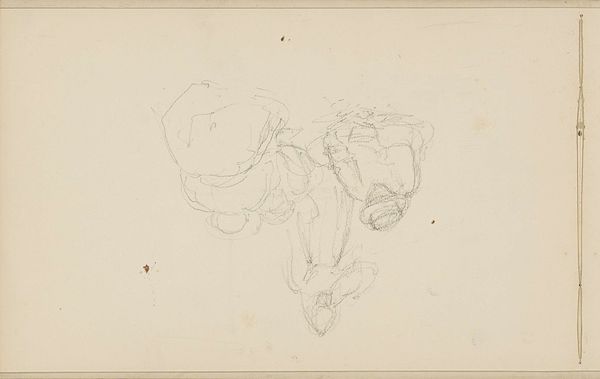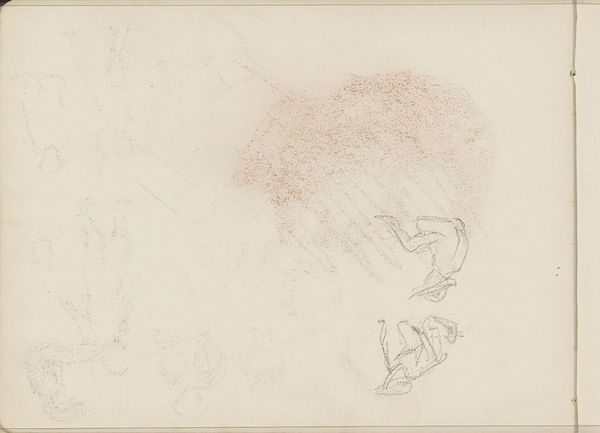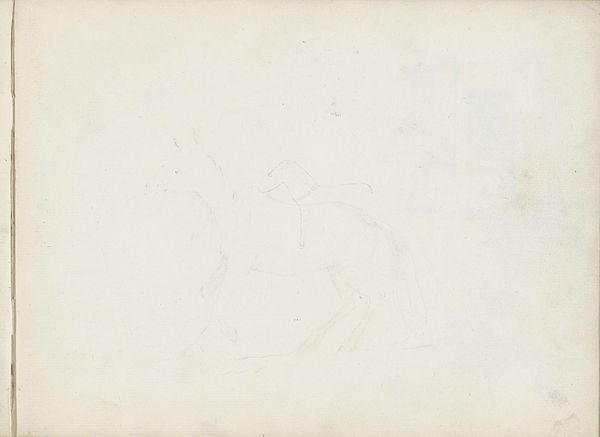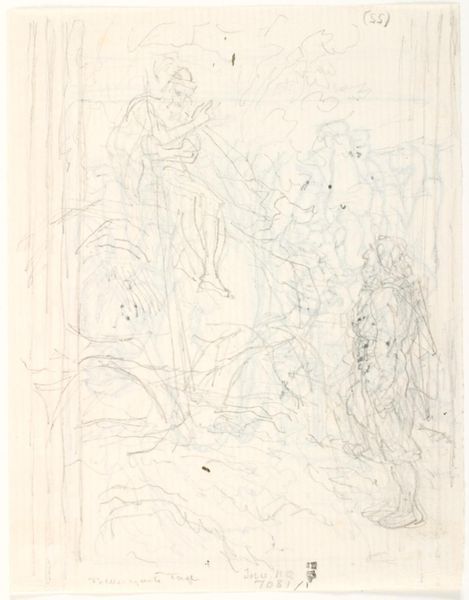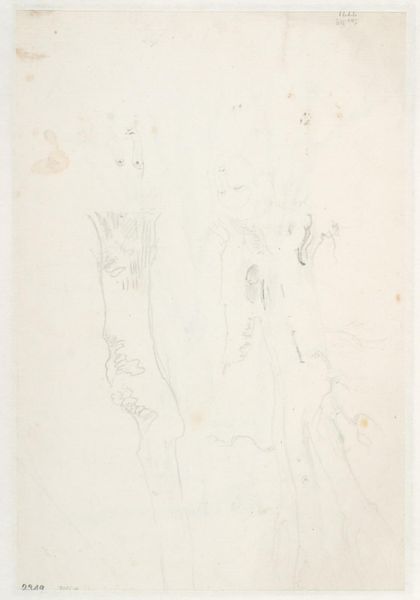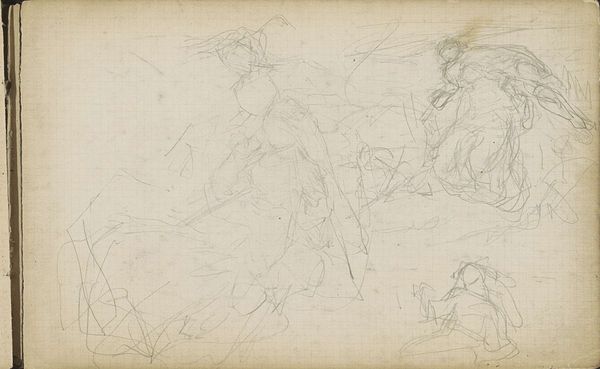
drawing, paper, pencil
#
portrait
#
drawing
#
etching
#
figuration
#
paper
#
pencil
#
pencil work
#
academic-art
Dimensions: height 219 mm, width 152 mm
Copyright: Rijks Museum: Open Domain
Curator: Let's turn our attention to this interesting drawing by Louis Moritz, titled "Drie schetsen van een knielende vrouwenfiguur," dating from 1783-1850. It's currently held here at the Rijksmuseum. Editor: My first thought is that this work seems so incredibly delicate, almost ethereal. The pencil lines are so fine. It gives the impression of fleeting moments captured. Curator: Indeed, the material simplicity speaks volumes. It's just pencil on paper, but look at the way he uses the pencil, the pressure applied, the sheer economy of line to suggest form. The means of production, so simple, yet yielding this nuanced result. How do you interpret those kneeling figures? Editor: Well, kneeling traditionally suggests supplication, prayer, or perhaps grief. Repeated across the page, it emphasizes the emotional weight, hinting at a recurring motif or a scene of collective mourning or reverence. Maybe connected with his historical or political contexts. Curator: I find it intriguing that these are merely sketches, implying an exploration of form rather than a finished, polished work. Moritz is working through something here, refining his approach. This speaks volumes about the labor involved, the artist's hand. Also how academic art operates. It involves careful work. Editor: True, and in terms of iconography, the absence of defined context opens up possibilities. Is she a saint, a commoner, a mythological figure? That ambiguity is key. Her image as one seeking for forgiveness from god might bring people closer to their beliefs or change them. Curator: And consider the paper itself. Was it mass-produced? High quality? These details are often overlooked, yet they ground the artwork in a specific socio-economic reality. What was paper production like at that moment? Editor: And while we can analyze materials and production methods, ultimately the drawing leaves me with a feeling of vulnerability and grace, brought out from the power of symbolism involved within that action represented there. Curator: Precisely. Moritz manages to capture a sense of human fragility, but it does require some level of understanding in pencil-work in order to convey that. A solid ending note, wouldn’t you say?
Comments
No comments
Be the first to comment and join the conversation on the ultimate creative platform.
